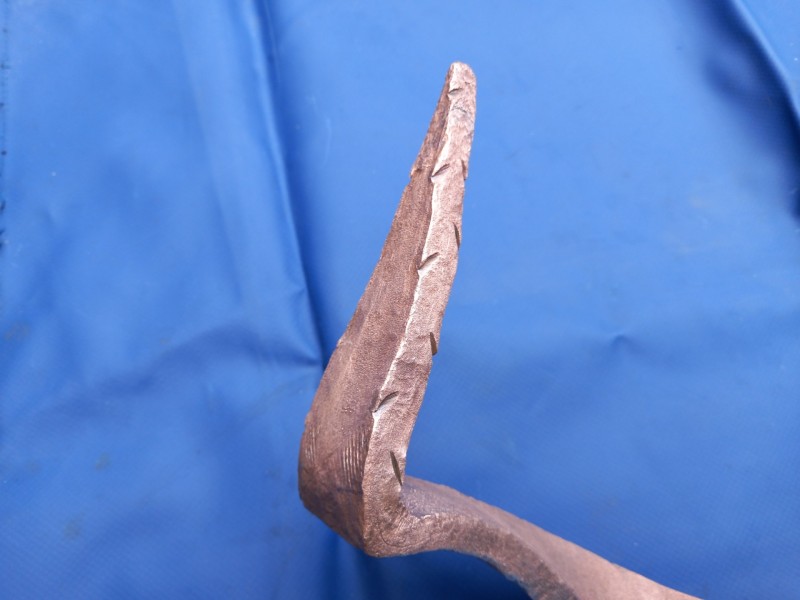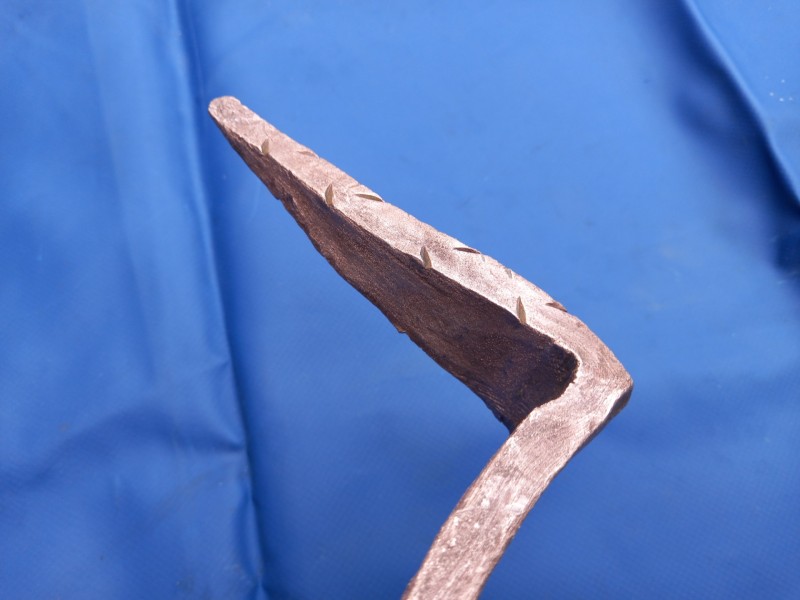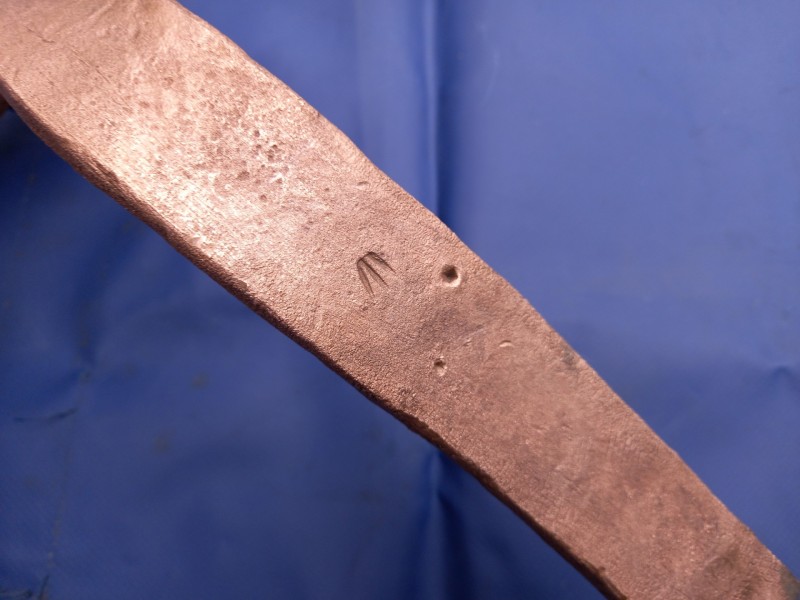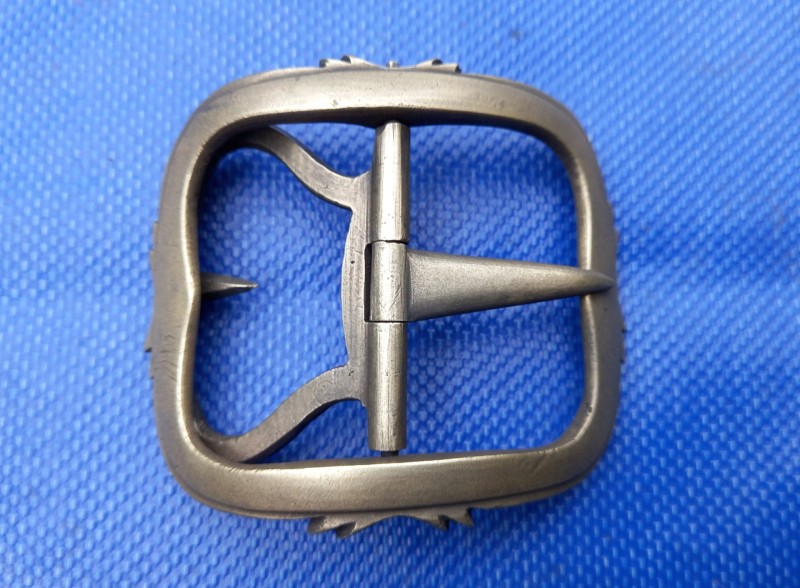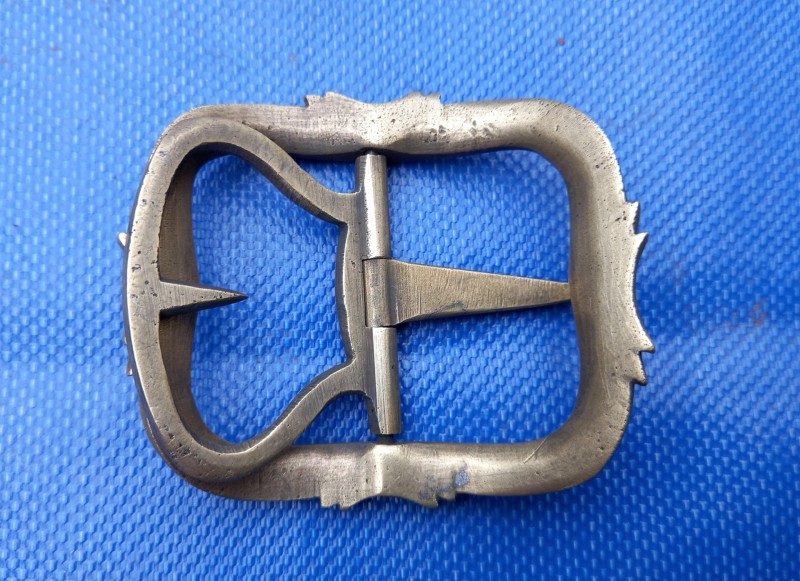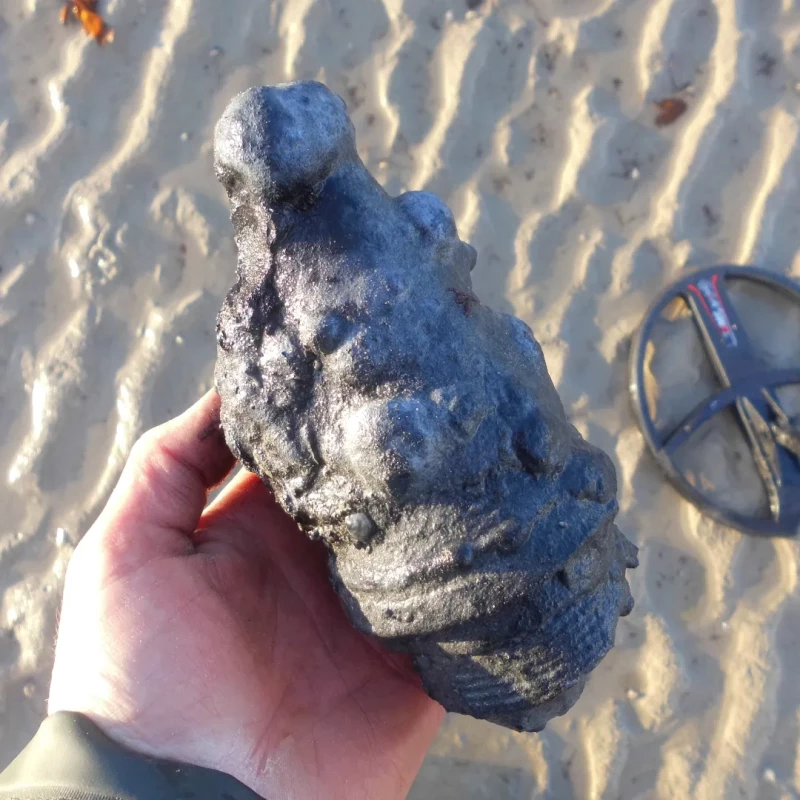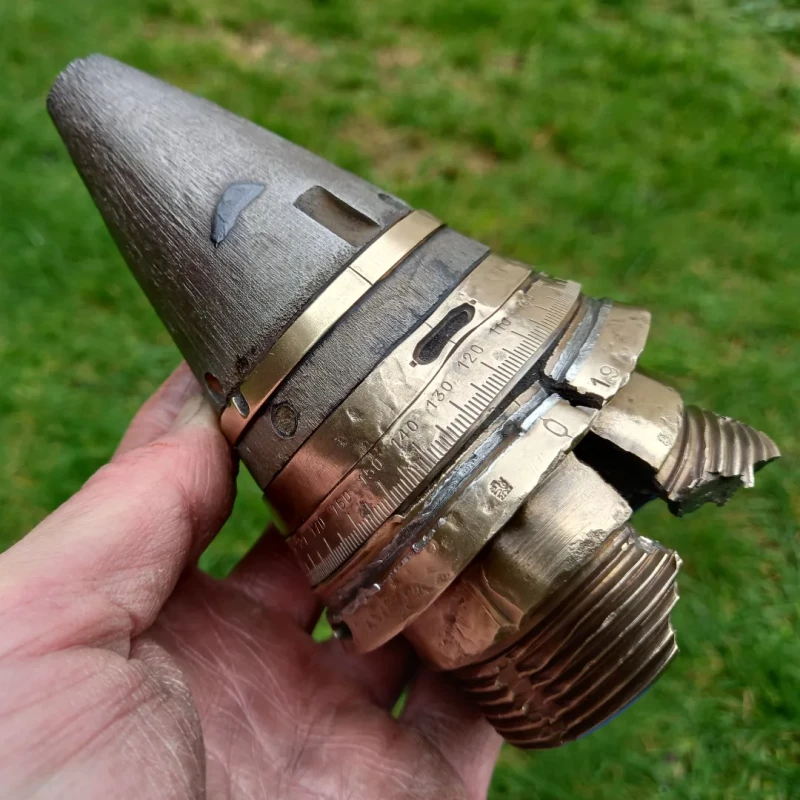
Steve Andrews
Full Member-
Posts
69 -
Joined
-
Last visited
Recent Profile Visitors
The recent visitors block is disabled and is not being shown to other users.
Steve Andrews's Achievements

Contributor (2/6)
206
Reputation
-
I had issues with mine showing the incorrect time, but it's been correct since the update.
-
Diving Program For High Conductors On The Beach
Steve Andrews replied to Steve Andrews's topic in XP Deus II Forum
I found this WW2 French 50mm mortar bomb fuze a couple of days ago. Captured by German forces and used by them here in Jersey, the mortar pictured in the book is the exact one that it came from. I target brass relics like this and use a 5 tone mod of Diving with the pitch of the last break set to max, so that they really stand out amongst all the large lead Victorian bullets. -
Live ordnance does still turn up, so detecting here had some risk attached.
-
This WW2 3.7cm Pak was an 84, with what I'd call "ironish hum" around it. The Deus II gives you so much information from the audio.
-
I would say around 20 inches.
-
-
This week we are having some of the biggest tides of the year here in Jersey, Channel Islands, so I've been hitting the beach. All found with a modified Diving program, with sensitivity up to 96, reactivity zeroed, plus some other changes. It's the one for deep high conductors on the beach. Using the 13", I've been seriously impressed with the depth I've been getting.
- 6 replies
-
- 13
-

-

-
Hi Carolina, I'm in Jersey, Channel Islands. It's a British island which is 14 miles from the French coast. This shot is iron.
-
Using a modded Diving program, this canister shot was in the 70s while in its concretion, but a steady 3 when broken out. I think this because of the iron content that has leached into the concretion, creating a target with a bigger volume.
-
Some of the digs can be pretty brutal and you need a decent all-steel spade. 🙂
-
Big iron will come up with a VDI in the mid to high 80s, so you can use your normal discrimination settings to eliminate the smaller bits. The low frequency weighting of the Diving program make it the best for deep cannonballs on the beach, but on land I would use Deep High Conductor.
-
Royal Navy 44-gun fifth-rate HMS Severn wrecked on my local beach in 1804, a few months before the Battle of Trafalgar. I found this great copper keel staple from her recently. I'm in Jersey, Channel Islands
- 4 replies
-
- 12
-

-
I found this great 1690-1720 period shoe buckle on the beach recently, using a modded Diving program. It's great for deep high conductors on the beach. I'm in Jersey, Channe Islands.
- 6 replies
-
- 16
-

-
Receiving the 13" coil for Christmas, I took it out to my local beach on Boxing Day. I found a few military relics, including this WW2 German-fired Czech artillery fuze
- 2 replies
-
- 10
-

-

-
I've found 0.71 to be very good on the beach, though I've had no problems with any of the versions to date. I generally hunt high VDI relics; 19th century British lead bullets, large cast iron shot and brass artillery fuzes and WW2 German-fired brass and aluminium fuzes. For these high VDI targets I favour the low frequency weighting of the Diving program as a base, with reactivity dropped to 0, sensitivity up to 96 and using 5 tones, with breaks for different categories of relics. I use the large numbers profile. If I'm on a jewellery recovery I use a program based on Beach Sens. Reactivity 0, full tones and using the XY screen.

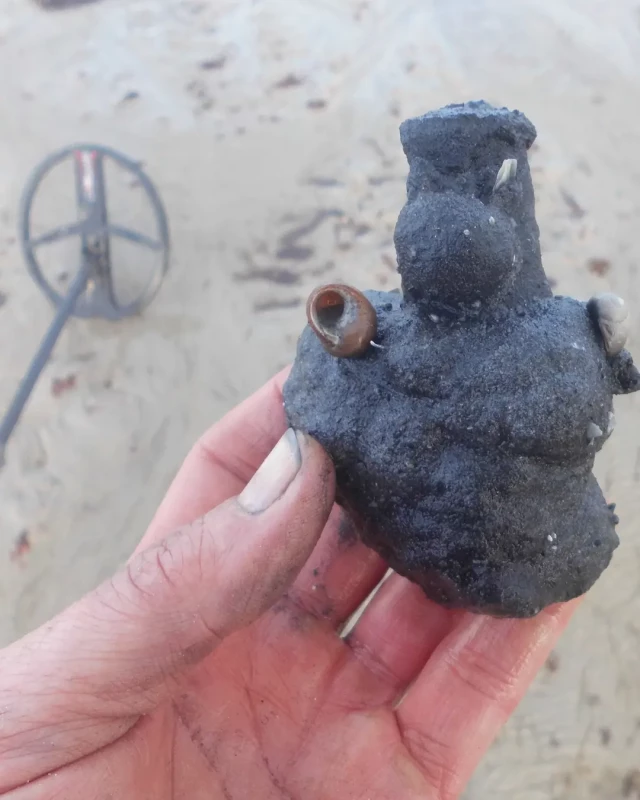
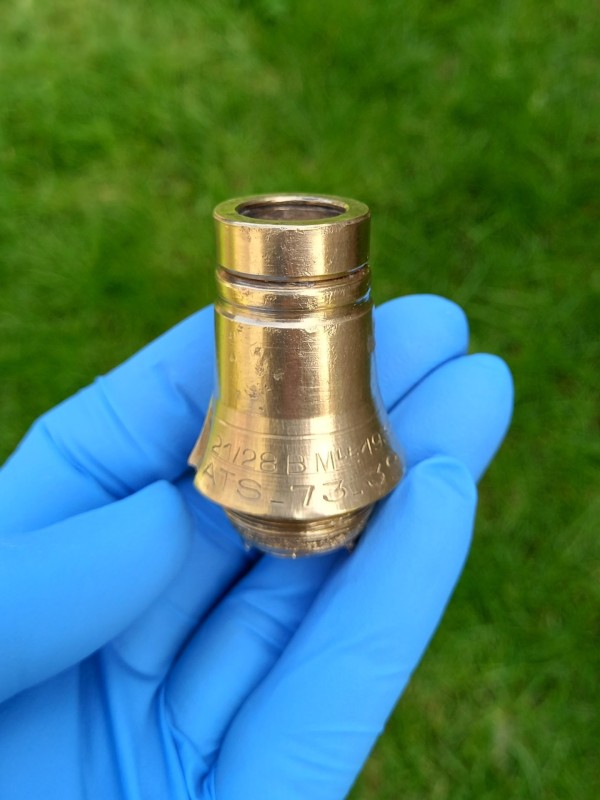
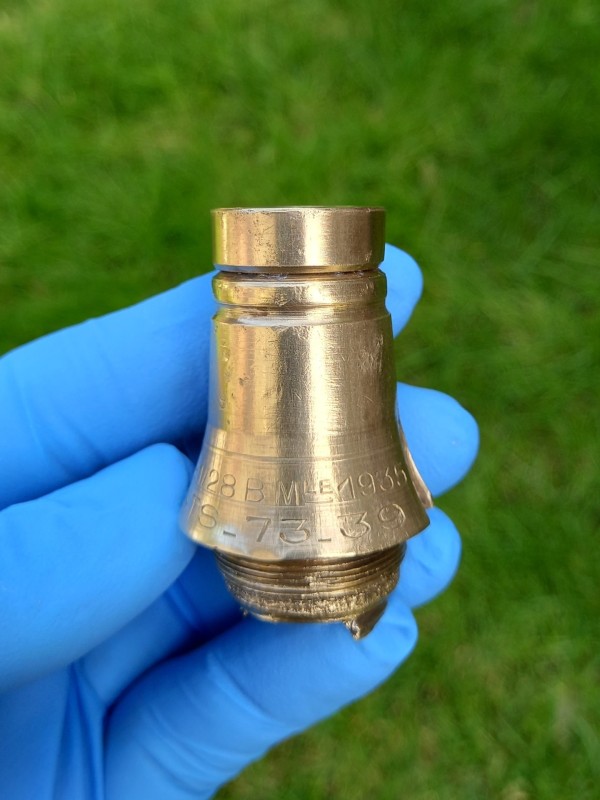
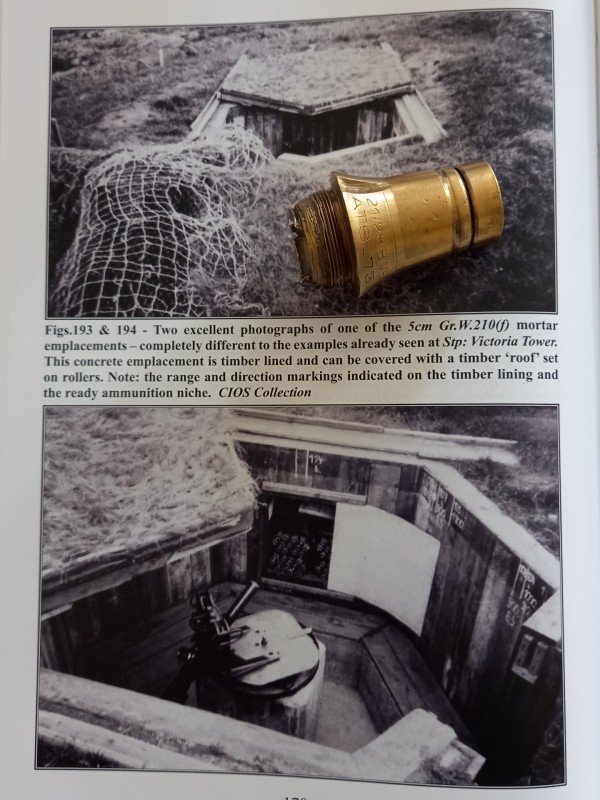
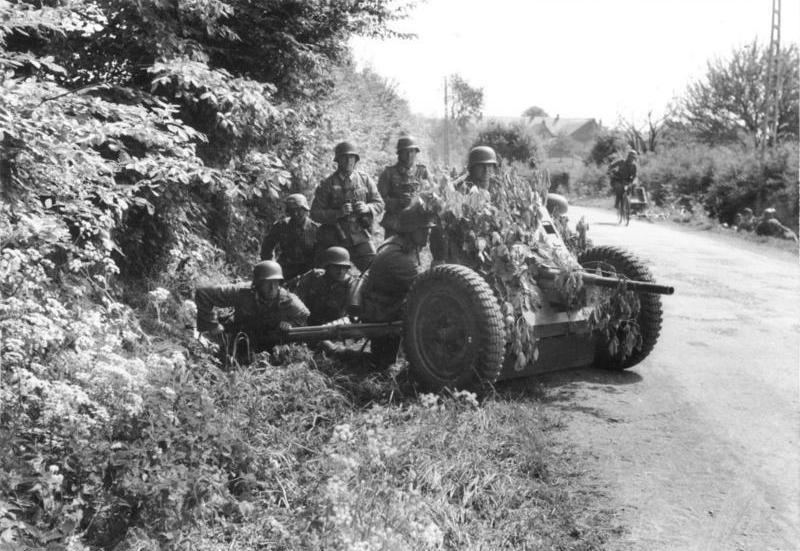
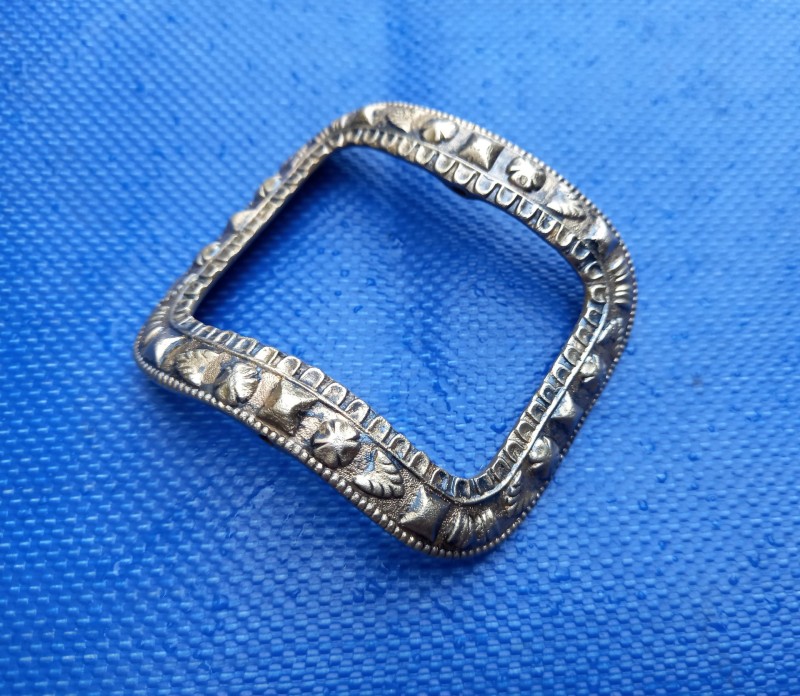
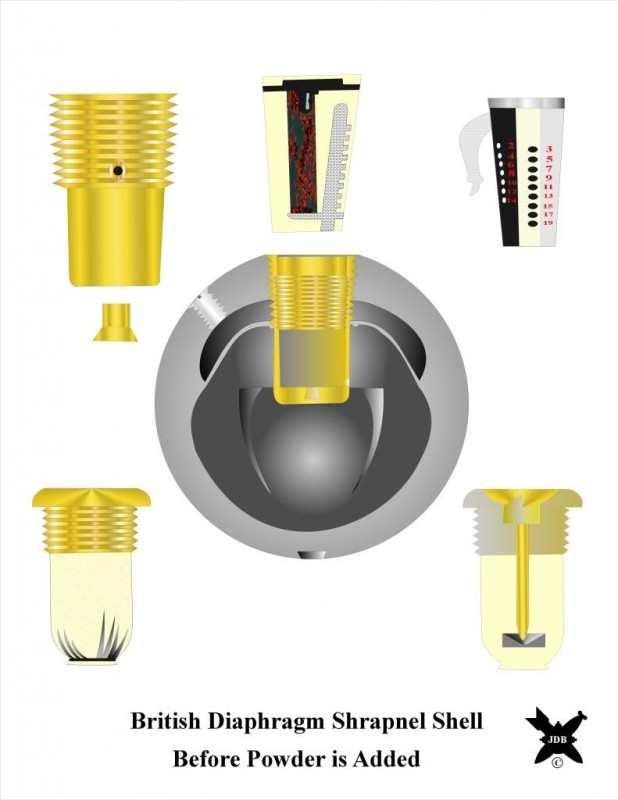
.png.ea8f40e9bbf8940f225cfb01335f9ea9.png)

